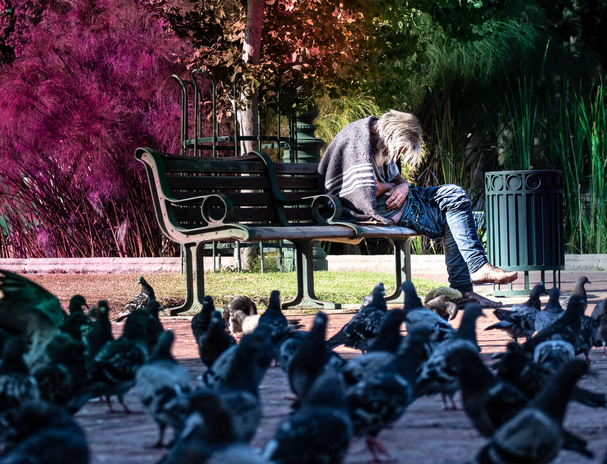If you’ve ever taken a stroll through a city and noticed some strange-looking spikes in a quiet corner or sat down on a bench with two or three armrests distributed across its length, you’ve seen hostile architecture.
Though this form of architecture is often easy to overlook or seemingly mundane—like a cement sphere in the recess of a building that may pass for mildly disinteresting street art—it’s indicative of a concerted effort by urban designers to make cities less hospitable to the homeless population. Hostile architecture intentionally places obstacles in spaces that would otherwise be available for sitting or laying down. In some cases, it even includes elements that would harm people if they were to try to sit anyway.
These installations serve to make life harder for homeless people, severely limiting the places they can rest and forcing them into less sheltered areas. With tent cities covering large sections of urban spaces, hostile architecture only serves to further marginalize the homeless and underserved—quite literally pushing them to the very edges of the cities.
A clear example of this phenomenon comes in Salt Lake City, where rocks have replaced lawn on the side of a women’s shelter, and benches in the cities’ homeless hotspots have been either entirely removed or changed to include “armrests” that restrict people from laying down.
Creating tools to keep the homeless out of easily accessible public spaces, without proposing solutions to homelessness, only serves to make life on the streets less comfortable and more dangerous.
Though homelessness is the primary target of hostile architecture, the consequences of making cities less hospitable reach even farther.
For disabled individuals, this could mean unnecessary blockages on sidewalks and in parks, plus limited areas for sitting if they need to rest. For the elderly or pregnant women who may need to rest frequently, benches designed to be uncomfortable—or a lack of benches at all—creates a public environment that is restrictive and unwelcoming.
In an attempt to restrict the people they do not want from utilizing public spaces, urban planners have created a norm that discourages anyone from resting in public spaces, thus keeping us either on the move or in private establishments.
Even for people who are not homeless and do not require spaces to rest, these installations serve as a testament to how few truly public spaces remain. Intentionally making parks and sidewalks uncomfortable and unwelcoming drives people off the streets, creating an atmosphere in cities that is exactly as the name suggests: hostile.


